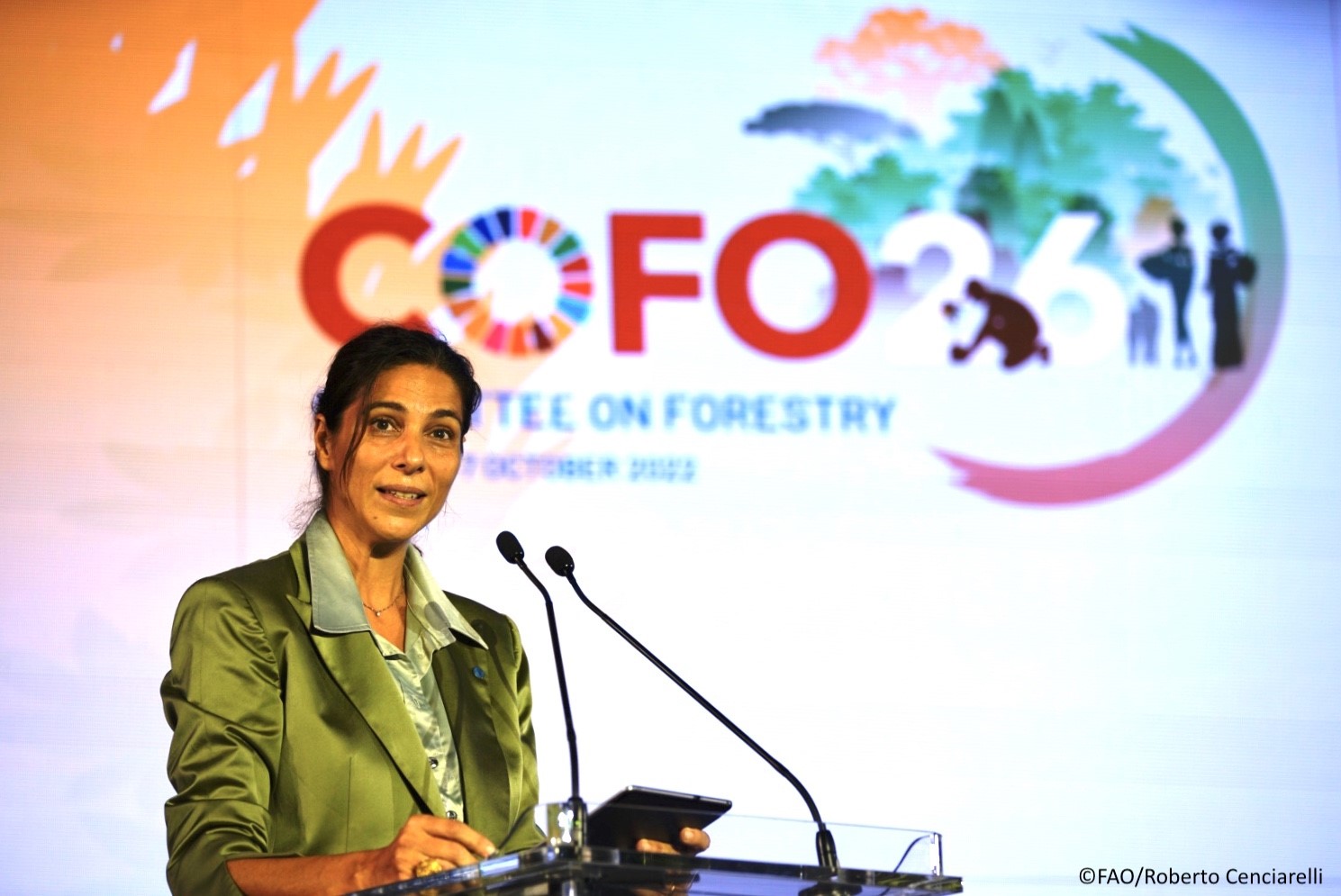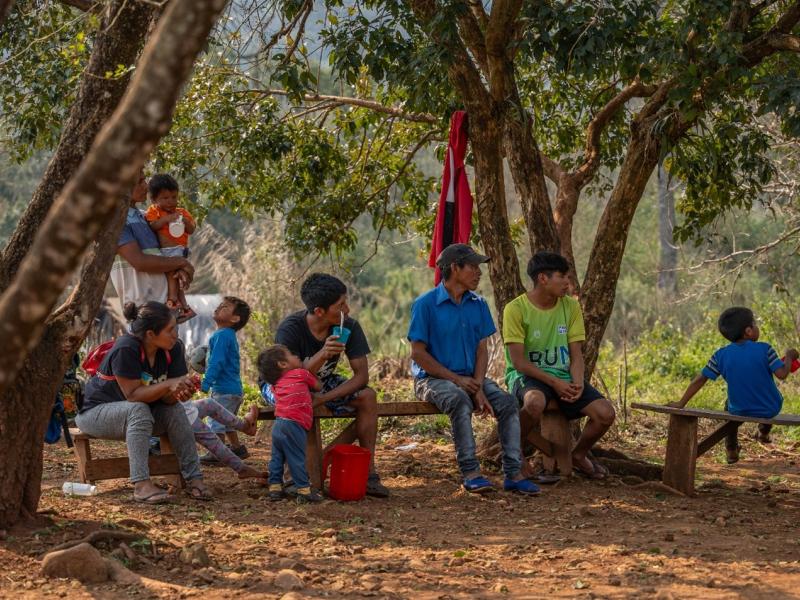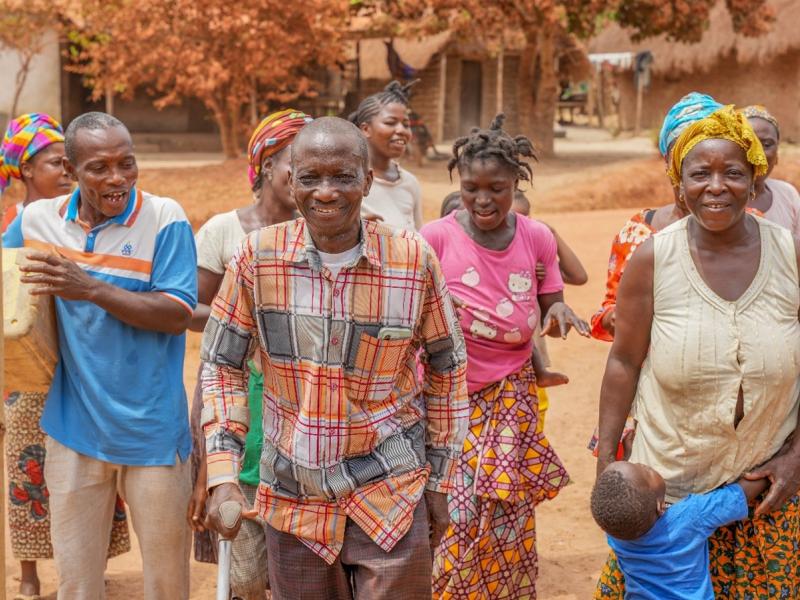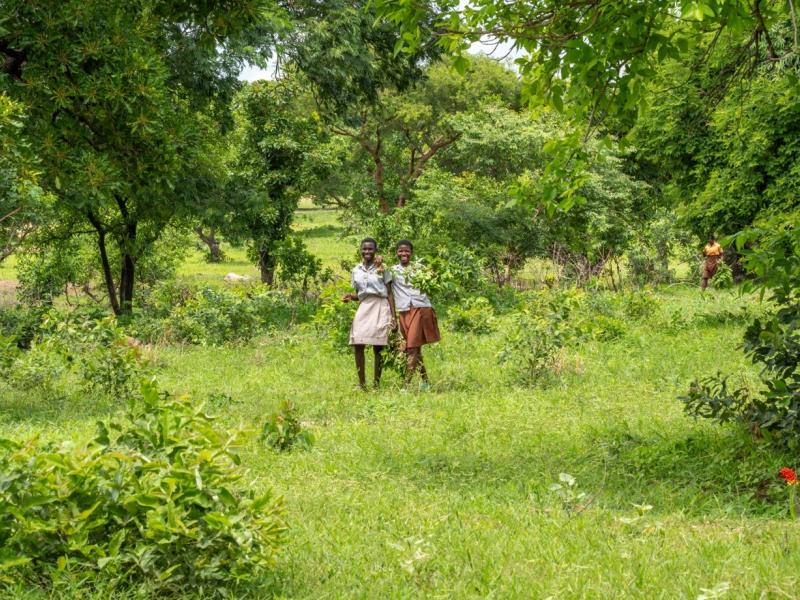As the global population continues to grow, with more mouths to feed, the world needs to put increased attention on how commodities are produced and the impact that has on deforestation and biodiversity loss. While emission reductions results have been reported and demonstrated by 24 countries – aided by REDD+ processes - deforestation and forest degradation continues to take place at a pace at odds with forest and international climate targets.
But it doesn’t have to be this way. By adopting and scaling up sustainable farming practices that boost agri-food productivity and allow forests to thrive, the trend can be reversed.
Ahead of International Day of Forests on 21 March, Serena Fortuna, the halting deforestation, degradation, and emissions team leader in the Food and Agriculture Organization of the United Nations (FAO) and UN-REDD Management Group member, discussed actions needed to allow food systems and forests to coexist for the benefit of all.
Fortuna, who has more than two decades of natural resources management and climate experience, supports countries on REDD+ processes, with an emphasis on aspects related to enhanced governance, integrated landscape approach and synergies with agriculture.
She discussed a variety of complex topics, including the balance between conservation and production, the need for scaling up synergies between agriculture and forestry, and the opportunities of transforming agrifood systems as a solution for reducing deforestation and related carbon emissions.
Here is what Fortuna had to say:
Question 1: What impacts does unsustainable agriculture have on forests globally and why?
For deforestation, it is essential to look at the work needed to maintain standing forests, boost sustainable management of the resources and achieving that delicate balance between conservation and production, strengthening livelihoods of people, and promoting concerted actions to meet multiple targets on forests, food security, and climate.
To do so we must address and find long-lasting solutions to the root causes of forest loss, which are multiple. These include unsustainable agriculture practices, but also illegal logging, urban expansion, more frequent and uncontrollable forest fires and pest outbreaks boosted by climate change.
The key focus is to boost the positive dynamics of agriculture-forestry linkages. There have been increasing calls in recent years, including in the Committees of Agriculture and Committees of Forestry to enhance synergies between these two sectors, both essential to boost economies, scaling-up the actions that can boost sustainable agriculture and decouple commodity production from deforestation.
The entry point is to look at how and what countries – including through the support of FAO and the UN-REDD Programme – can do to promote more sustainable practices.
Governments have a key role to play, but Indigenous Peoples, local communities, and smallholders are part of the solutions, as they have the power to be the guardians of the forests. Their engagement, empowerment and capacities are key to maintaining forests, including through more sustainable agriculture and forest management practices, while boosting livelihoods, food security and local economies. The private sector, has a role to play as well, with more responsible and forest-friendly investments.
The interface between agriculture and forestry, scaling up sustainable practices that can merge forest objectives and boost food security, holds invaluable solutions for a balanced approach between production and conservation. Potential solutions must be designed according to local circumstances and to strengthen the capacities of different stakeholders with special emphasis on smallholders, enhancing livelihoods and food system transformation. Concrete systemic shifts that could contribute in this regard would include strengthening land use governance, promoting sustainable production models, increasing consumption and trade of responsibly produced agriculture commodities, creating incentives and optimizing expenditures in land use, enhancing robust information and data for better decision-making and boosting improved livelihoods and promoting equity and inclusion.
Question 2: What benefits do forests bring to agrifood systems, livelihoods and cultures? How do we ensure equitable benefit-sharing among Indigenous Peoples and also local communities?
The benefits are multiple under the three connected aspects of agrifood systems, livelihoods and culture. A key point is indeed the services that forests provide to agriculture. This includes securing water, regulating watersheds, generating a microclimate and healthy soil that is favorable for thriving agriculture production, acting as natural barriers against winds for crops, providing homes for pollinators, and providing shade for livestock and different commodities, like cocoa. The International Day of Forests this year reminds us about this important connection and celebrates forests and food.
Livelihoods and cultures – especially at the local level - are heavily intertwined with forests. In addition to the economic benefits links to sustainable management and tourism, there are a variety of food and medicine sources that come from the forest itself. Especially in tropical forest countries, forests are part of the lives and culture of Indigenous Peoples and that of local communities. Forests represent for them shelter, food, sacred places and – when well managed and protected - a sustainable source of income. That is why our strong recommendation and approach, both through all FAO work and UN-REDD programme, is to ensure that decision-making and actions undertaken on forests are to be planned and developed with full engagement of those who live and depend on them. Also vital is the full free prior and informed consent of Indigenous Peoples.

Question 3: Countries will update their plans contained in their Nationally Determined Contributions this year. What do we need to see on agriculture and forests?
To address the global climate crisis, 196 Parties from developed and developing nations adopted the landmark Paris Agreement in 2015. While efforts were made, including in embedding forest elements in NDCs – often boosted by the REDD+ process – a recent review of collective progress towards meeting such Agreement confirms that the greenhouse gas emission (GHG) scenarios embodied in current NDCs are still highly insufficient.
We need to see more ambitious plans, investments and actions, including optimized finance in the land use sector, breaking of silos and boosting actions on deforestation - not only in forest sectors but also in the land use approach. In the upcoming NDCs we hope to see – and some REDD+ countries are moving in this direction – a higher percentage of reducing deforestation objectives and those objectives are included in a more holistic approach. A joint effort from the forest, land use and agriculture sectors.
Question 4: COP30 will be held in the Amazon for the first time in 2025. What kind of transformational changes do we need to agree on in agriculture to break the link between deforestation and biodiversity loss?
We hope that this will be ‘The Forest COP’, and the high recognition given to forests in the first letter released by the COP30 Presidency this month enables us to move in that direction. If we reverse deforestation and recover what the world has lost, as indicated by the Presidency “forests can buy us time in climate action in our rapidly closing window of opportunity”.
In the changing geopolitical environment, we hope forests will continue to be recognized as a key actor in the fight against climate change - with joint benefits for mitigation and adaptation - and that appropriate action and commensurate finance will be boosted. With governments’ attention and public expenditures increasingly under pressure, we hope that forests will be recognized as a key ally and key factor that is able to respond to the multiple challenges and crises we see in the world.
To ramp up efforts to reduce deforestation, transformative change to agri-food systems can assist – the way we produce our food and the way our economies work on the ground, with a higher-level of aligned policies in countries. This will mean a lower level of perverse incentives from different sectors, and more positive incentives launched on the ground. Optimized public investments on land use, and sustainable development within and outside forests for urban expansion and agriculture production would be strategic, especially in this stringent era for funding worldwide. Enhanced synergy between climate change and national pathways for food system transformation, so that forest protection, forest production, and agriculture production are aligned into a common objective of sustainability would help shift the needle towards success.
We need concrete action taken on the involvement and benefit-sharing for women, Indigenous Peoples, and local communities. It is also very important for governments to promote an enabling environment for the private sector – including local communities and smallholders – to thrive and bring in positive funds for sustainability.
Full commitment from countries and private sector stakeholders, combined and supported by an enhanced and reformed multilateralism, in the year that marks the 80th anniversary of the United Nations , promoting innovation and building on lessons learnt and experience, will be critical.
As the world risks exceeding the 1.5°C threshold, the UN Secretary-General emphasized that that it is impossible to tackle global heating without actions on biodiversity loss to protect forests and other carbon sinks. REDD+, halting and reversing deforestation strategies in tropical forest countries continue to be strategic platforms for such progress.



